The Outstanding Finalists of Leica’s 2022 Oskar Barnack Photo Awards
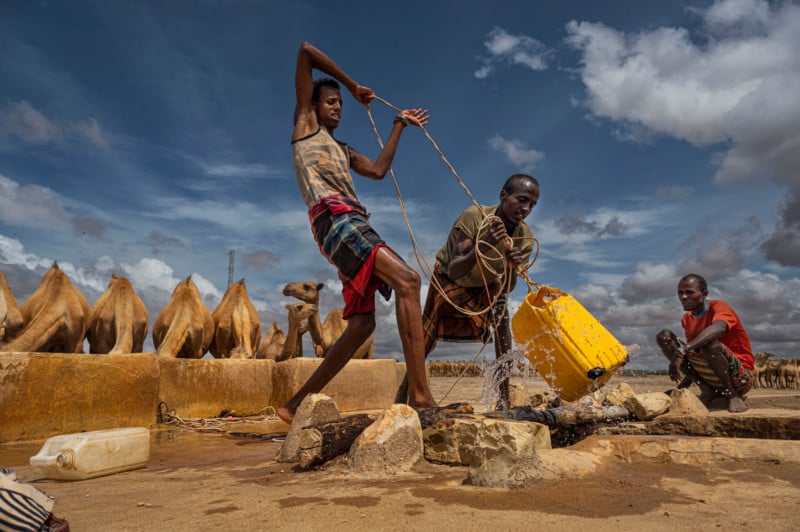
Leica has announced the finalists of the 42nd-annual Oskar Barnack Awards, named after 35mm photography pioneer Oskar Barnack. The competition is one of the world’s most prestigious and the winner will receive $40,000 in cash along with $10,000 of Leica equipment.
The Leica Oskar Barnack Awards (LOBA) jury determined the 2022 shortlist from proposals submitted by about 60 top-ranking international photography experts from 34 countries.
For the first time this year, the Leica Oskar Barnack Award Newcomer — awarded to a photographer under the age of 30 — has also been selected in collaboration with proposals submitted by international institutions and universities from 15 countries.
The winners of the Main and Newcomer categories as well as the Leica Hall of Fame Award will be selected from the group and announced on October 20 and all LOBA finalists will be visible in an exhibition at the Ernst Leitz Museum in Wetzlar, Germany. After the exhibition, the LOBA 2022 presentation will be shown at other Leica Galleries and at photo festivals around the world.
As mentioned, LOBA is one of the most highly endowed and prestigious awards in the field of photography and the winner of the competition receives $40,000 and Leica camera equipment valued at $10,000; the winner of the Newcomer Award receives $10,000 and a Leica Q2.
Below is an overview of all LOBA 2022 shortlisted series in the Main and Newcomer categories, in alphabetical order:
Lynsey Addario: Women on the Frontline of Climate Change
The American photojournalist (born 1973) presents four perspectives on the consequences of climate change: the women firefighters in Northern California; indigenous women in the Brazilian Amazon fighting slash-and-burn practices and land appropriation; women from flooded areas in Southern Sudan; and women in the drought-plagued regions of Ethiopia. These visually striking images illustrate how the advance of climate change is threatening and destroying every aspect of life, be it in Africa, North or South America.
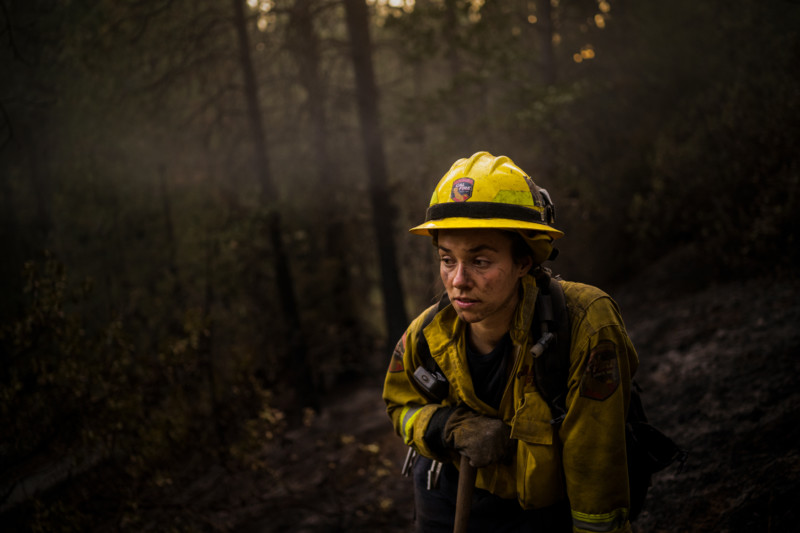
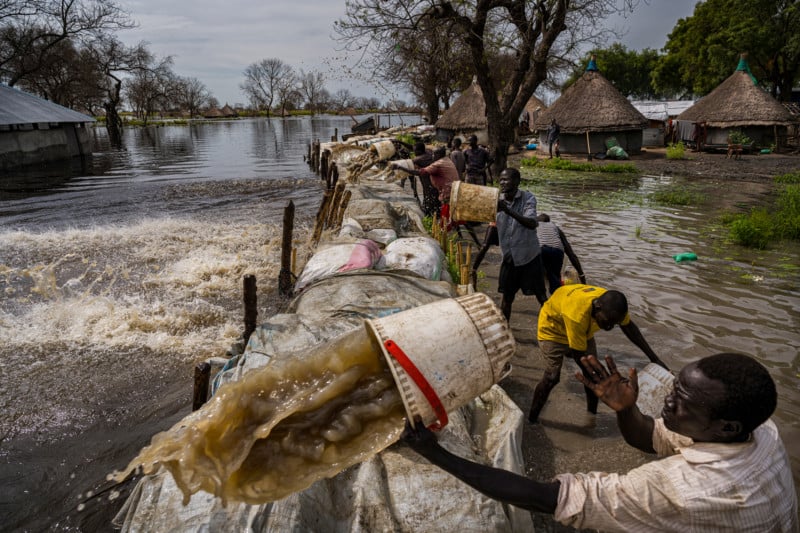

Irene Barlian: Land of the Sea
As the largest island nation on the planet, Indonesia is acutely affected by ongoing climate change. It threatens the livelihoods of millions of people; their displacement has long become a reality. The capital of Jakarta is already known as the fastest sinking metropolis in the world. This is a wake-up call in the form of photography: in this series, the Indonesian photographer (born in 1989) documents a humanitarian crisis and the effects of flooding along the coastal regions.
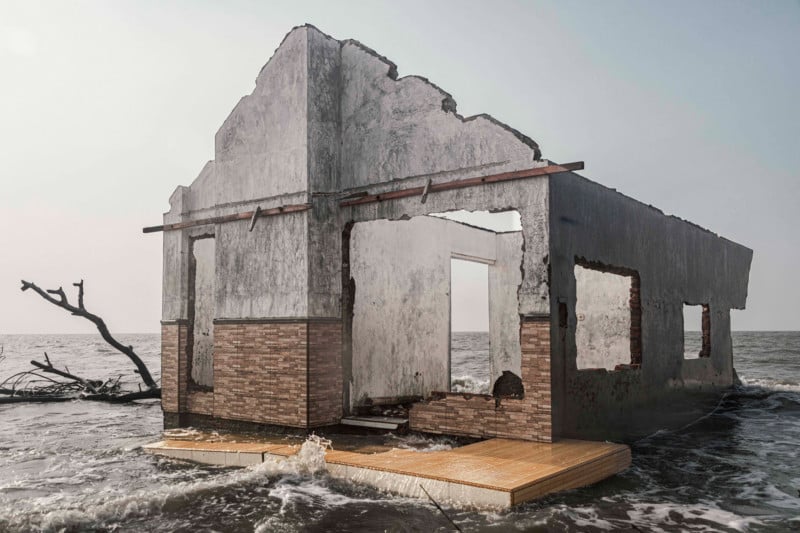
Indonesia is an archipelagic country that has more than 17.000 islands with one of the longest coastlines in the world. The majority of them are on the brink of inundation by rising sea levels, one of the best comprehended of climate change’s numerous threats. According to Climate Central’s report entitled “Flooded Future: Global vulnerability to sea level rise worse than previously understood”, around 23 million coastal residents in Indonesia are at risk of annual sea flooding by 2050. Tragic alteration of the landscape has already happened in several regions like Jakarta, Demak, Pekalongan, and Gresik. Here, displacement due to flooding is not a mere future, it’s momentarily befalling. Land of The Sea is a story about the effect of climate change on the northern coast of Java through the unique perspective of the community that resides along the region.
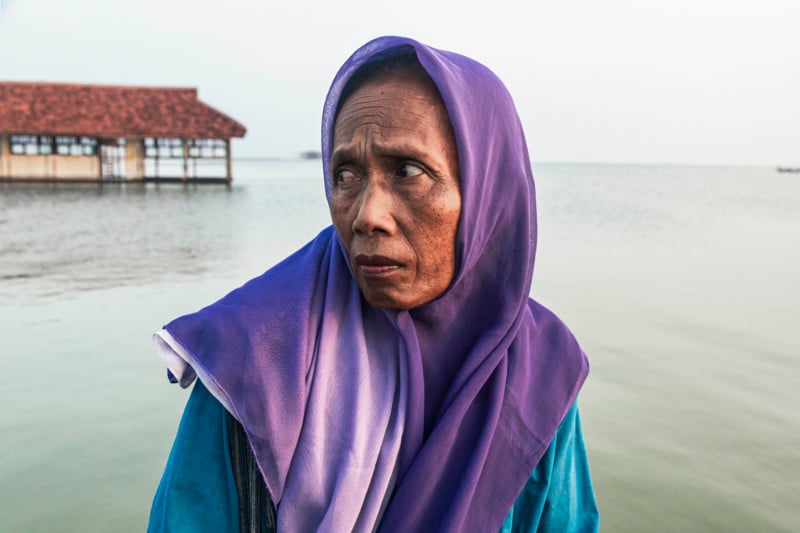
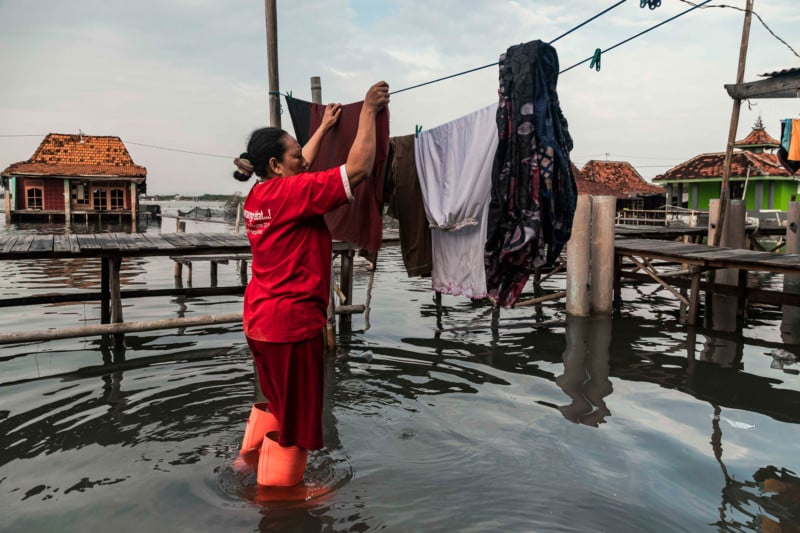
Alessandro Cinque: Peru, a Toxic State
Even today, Peruvian mining is still defined by neo-colonial structures. This black and white series, taken over the past five years or so by the Italian photojournalist (born 1988), documents the serious ramifications of unrestrained mining for the local populace. Peru has always been rich in mineral wealth; consequently, mining is an important economic asset for the country. Even so, the indigenous communities have remained impoverished and suffer greatly from the destruction of their vital resources.
![]()
![]()
![]()
DOCKS Collective: The Flood in Western Germany
In July 2021, entire areas of Germany’s Rhineland-Palatinate and North Rhine-Westphalia were devastated due to unusually heavy rainfall and the resulting floods. For months, the German photography collective DOCKS documented the destruction and suffering, as well as the tough reconstruction efforts. The group founded in 2018 includes Aliona Kardash (born 1990), Maximilian Mann (born 1992), Ingmar Björn Nolting (born 1995), Arne Piepke (born 1991) and Fabian Ritter (born 1992).
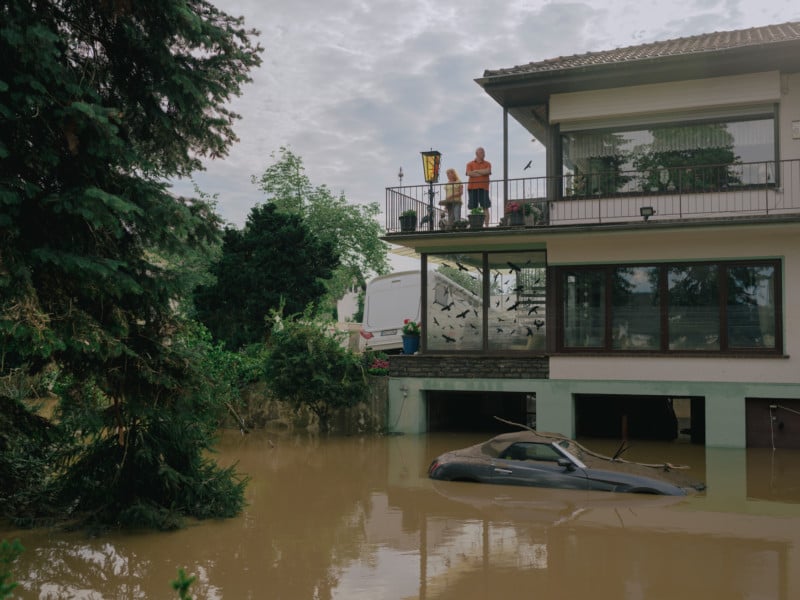

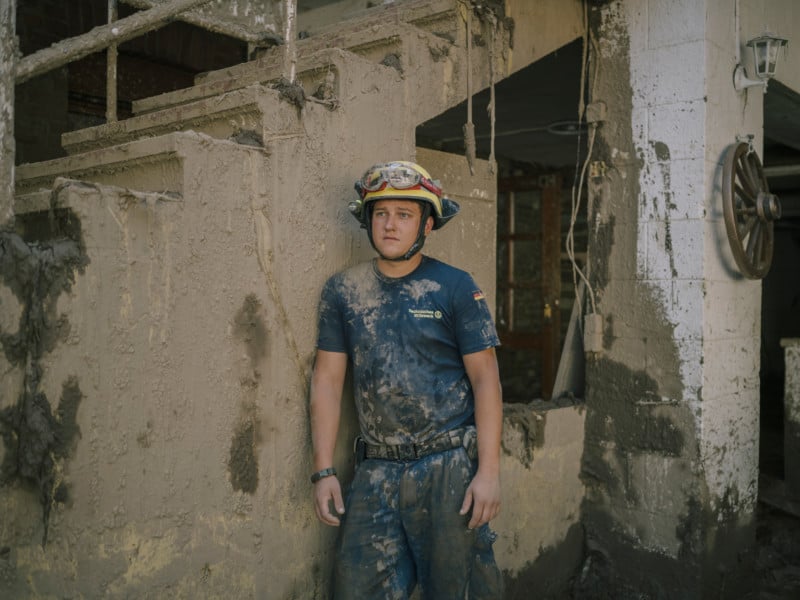
Valentin Goppel: Between the Years
The German photographer (born 2000) traces the effects of the pandemic on his generation as well as young adults living in the times of Corona. He, too, experienced the sudden breaking down of old habits and the feeling of insecurity, which seemed to determine every plan for the future. Corona appears to be like a catalyst for ongoing disorientation. Photography, however, presented a tool with which to better understand his thoughts and fears, and to find images for the sense of forlornness.
![]()
![]()
![]()
Kiana Hayeri: Promises Written on the Ice, Left in the Sun
After the withdrawal of Western troops from Afghanistan in the summer of 2021, it became clear within days, that the Taliban would work to destroy everything that had been achieved concerning freedom of expression, women’s rights, and education, replacing them with renewed fear and insecurity. Born in Iran in 1988, the photographer grew up in Canada, and has been living in Afghanistan for more than seven years: time and again her work focuses in particular on the difficult living situations for women.
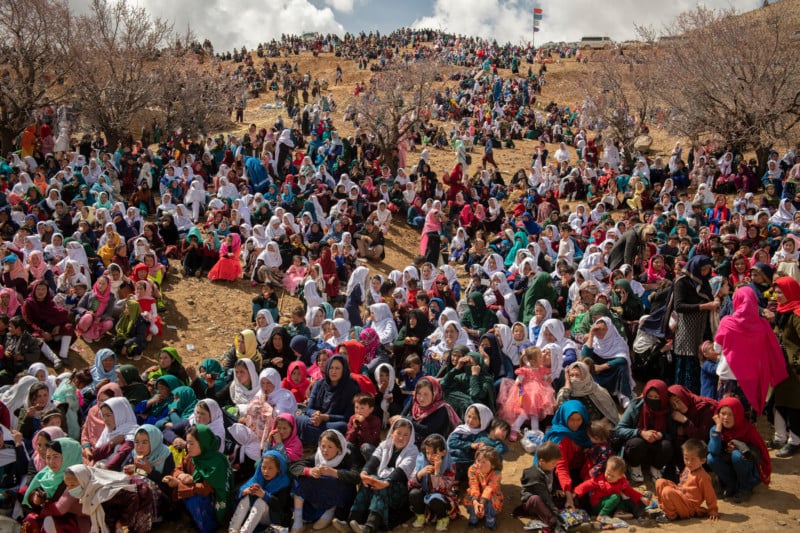
Men and women dressed in their best outfits wearing make up, arrive in remote village of Nalij village in Miramoor district of Daikundi.
During the Taliban rule, Now Rouz was banned and considered an “ancient pagan holiday centered on fire worship.” While historically, extremist organizations have planned disruptive activities and attacks targeting the large gatherings during the annual Now Rouz celebration, Nalij village located in a remote area of Daikundi province in Central Highland has remained untouched.
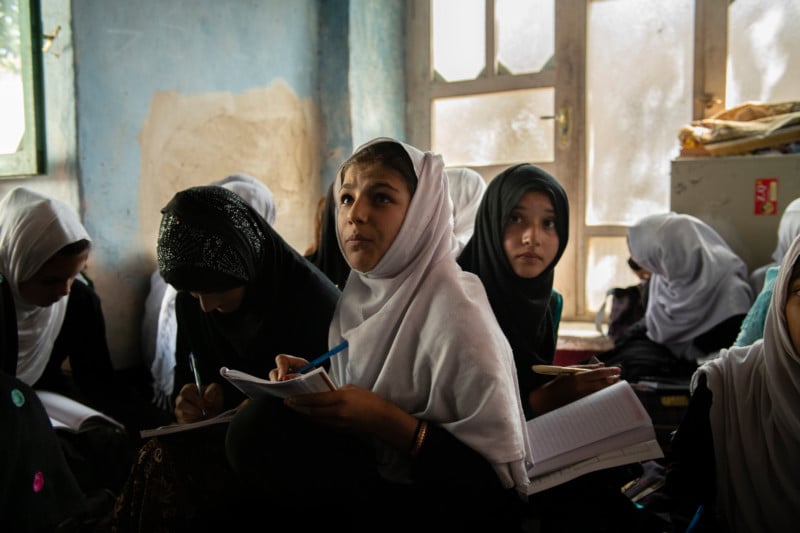
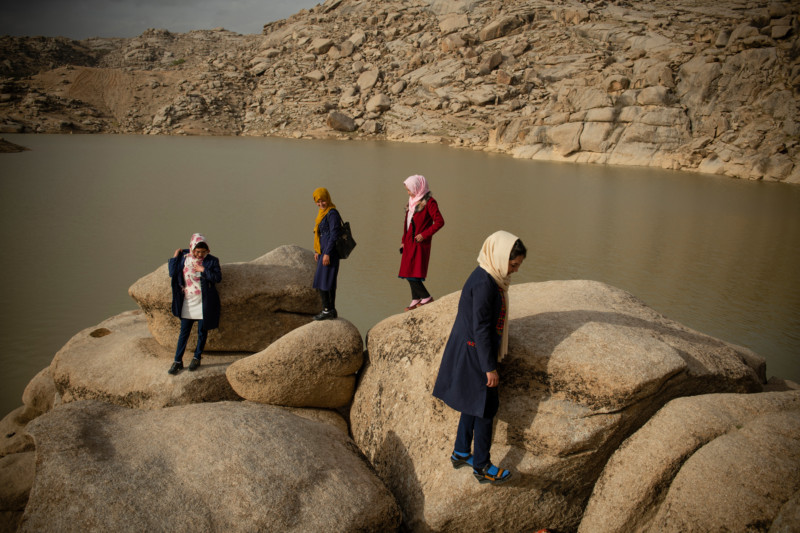
All girls are from far out districts of Daikundi and unable to go home for this year’s Now Rooz celebration. This Now Rooz marks the start of a new century in Gregorian calendar.
Nanna Heitmann: Protectors of Congo’s Peatland
In this series that examines active local climate protection with global repercussions, the German photographer (born 1994) introduces the inhabitants of Lokolama, a village in the Democratic Republic of Congo. They are determined to defend their vast, and hitherto untouched peatlands against the threat of deforestation and resource extraction. Enormously important to the global climate, the area represents one of the largest tropical peatlands on the planet – an ecological marvel that stores many billions of tons of carbon.
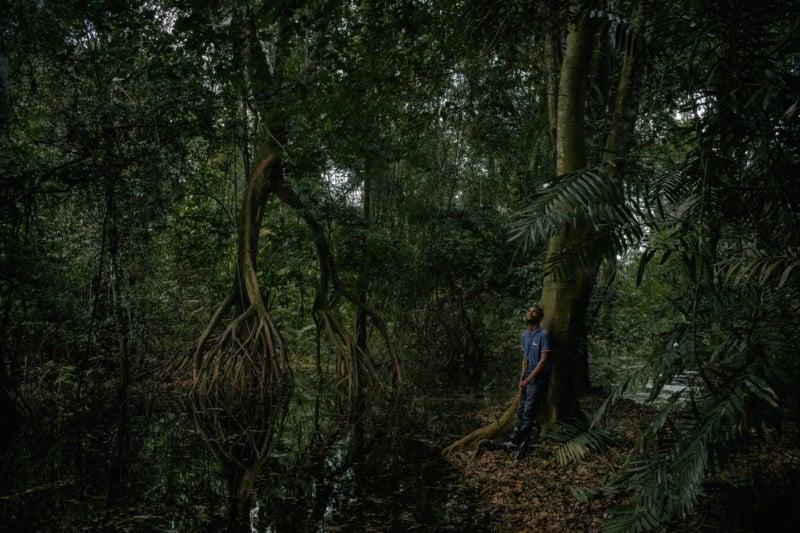
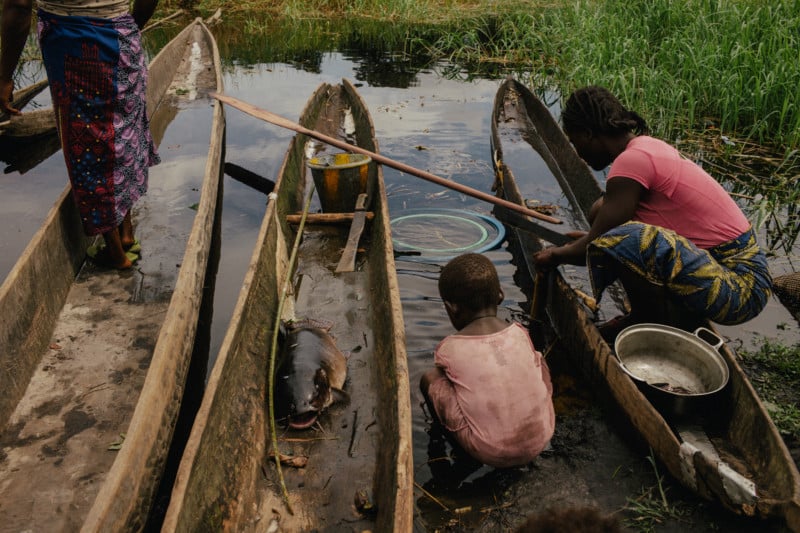
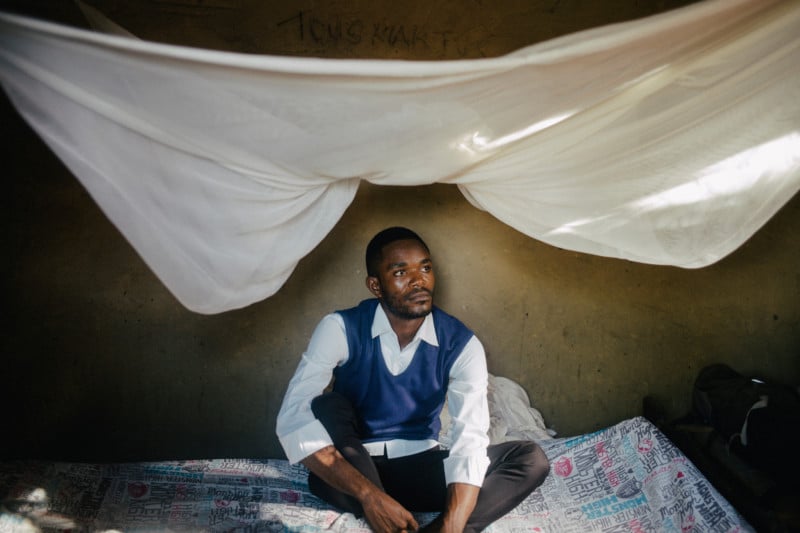
M’hammed Kilito: Before It’s Gone
Oases are an important ecological buffer against desertification, and represent places of biological diversity. In addition to abundant water and the right soil quality, date palms are a crucial element. Now more than ever, the balance of these factors is threatened by climate change and human intervention. The Moroccan photographer (born in 1981) provides insight, not only into this sensitive ecosystem, but also into the intangible heritage of the nomadic cultures of his home country.
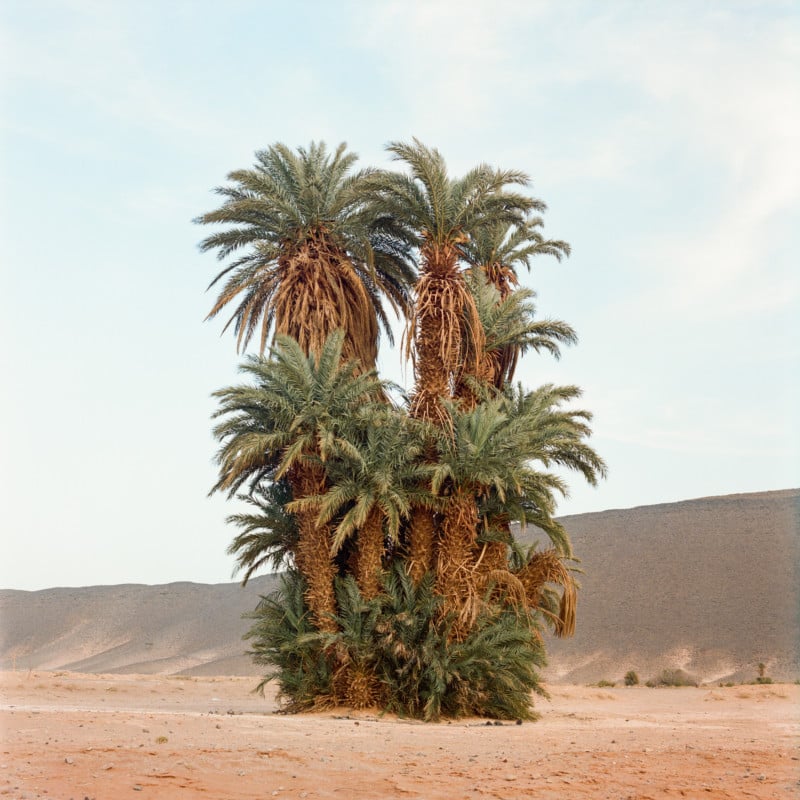
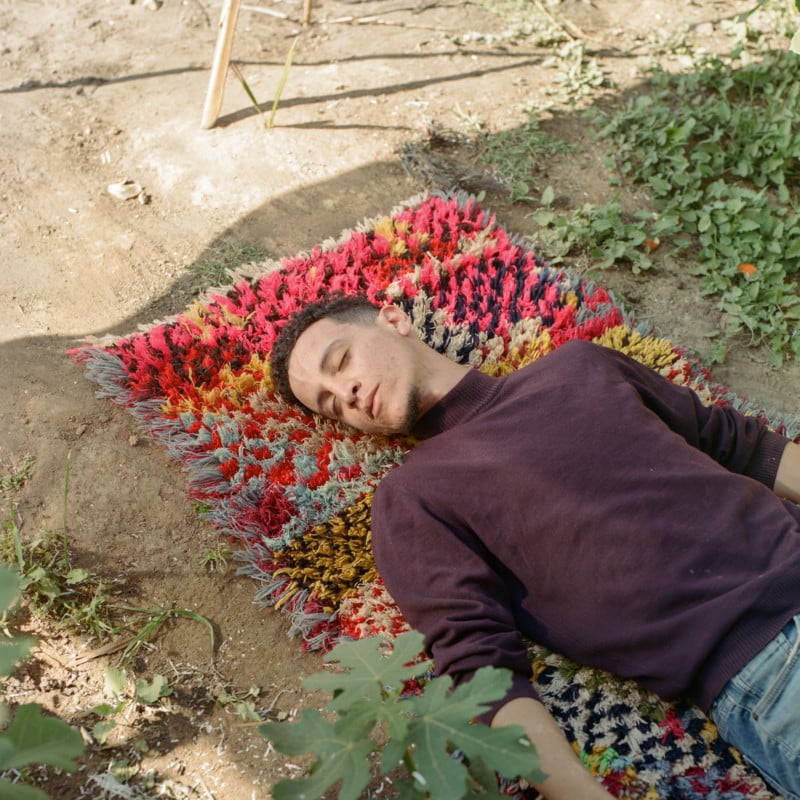
Hicham emigrated to France for a year and after doing several difficult and poorly paid jobs, he decided to return to Morocco. To his surprise, no one encouraged him. Especially his family, who he thought would support him in his decision, had a very negative reaction. Today, Hicham is a fulfilled young man, happy to be in Morocco. He lives in Agadir and works in an association that helps integrate street children.
![]()
Léonard Pongo: Primordial Earth
Inspired by the country’s traditions, craftsmanship and mythologies, this series is dedicated to the landscapes of the Democratic Republic of Congo. Born in 1988, the Belgian photographer and visual artist’s approach is highly subjective. Going beyond the material limits of photography, themes of emergence, apocalypse and eternal recurrence become an allegorical narrative about the history of humanity and the planet, with the Congo at its center.
![]()
![]()

Victoria Razo: Haitian Migration Crisis
This series focuses on the Dorjean-Desmornes family, whom the Mexican photographer (born 1994) accompanied for two and a half months during their migration to the USA. The family came originally from Haiti, and they are among the thousands of people who tried to reach the US via Mexico, in September 2021 alone. Their fate is representative of those who hope for a better life by migrating to the US, despite a journey representing years of hardship and great risk to their lives.
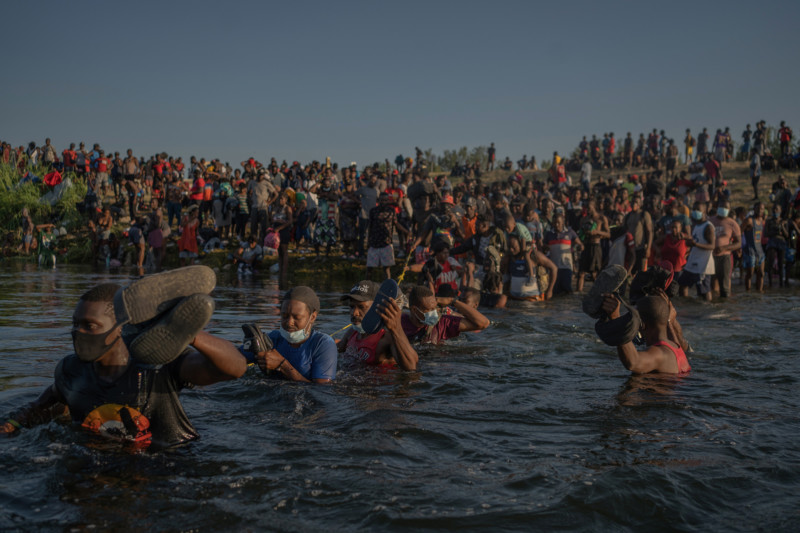
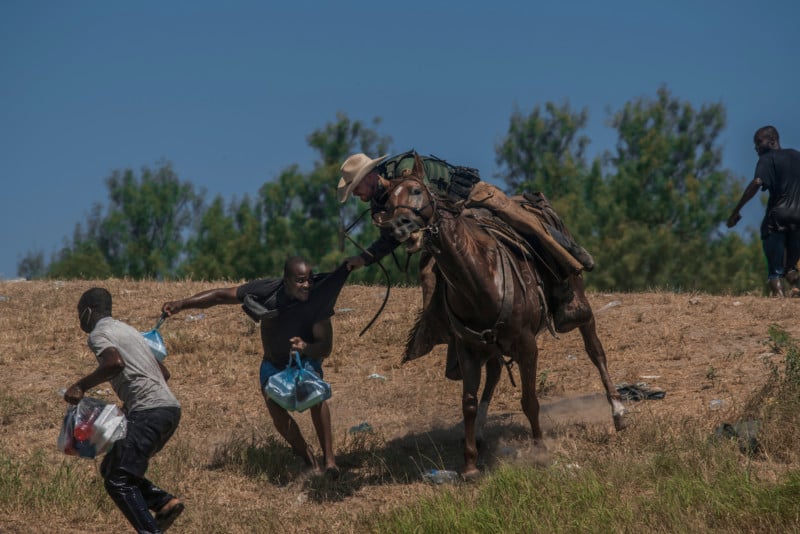
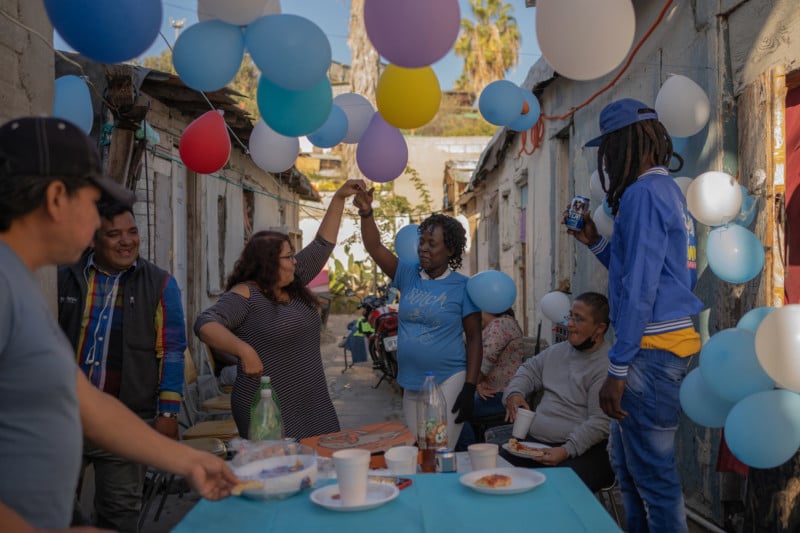
Felipe Romero Beltrán: Bravo
In this photographic essay, the Colombian photographer, born in 1992 and now residing in Spain, places the border region between the US and northern Mexico at the center of his observations. The Rio Bravo is defined by its double status as both a river and the borderline. The project, which is still in progress, began on the river’s Mexican banks. Everything there seems to be in limbo; be it people, objects or even the architecture. Everything is defined by the border situation.
![]()
![]()
![]()
Rafael Vilela: Forest Ruins: Indigenous Way of Life and Environmental Crisis in the Americas’ Largest City
The largest city in the Americas stands on former forest lands, a large region along the Brazilian coast, once inhabited by the indigenous Guarani people. One of the few pockets remaining today in the São Paulo area consists of six villages with around 700 Guarani Mbyá, and is the smallest demarcated indigenous land in Brazil. The Brazilian photographer (born 1989) dedicated himself to this indigenous community and questions the standard urban development model, in times of climate change.
![]()
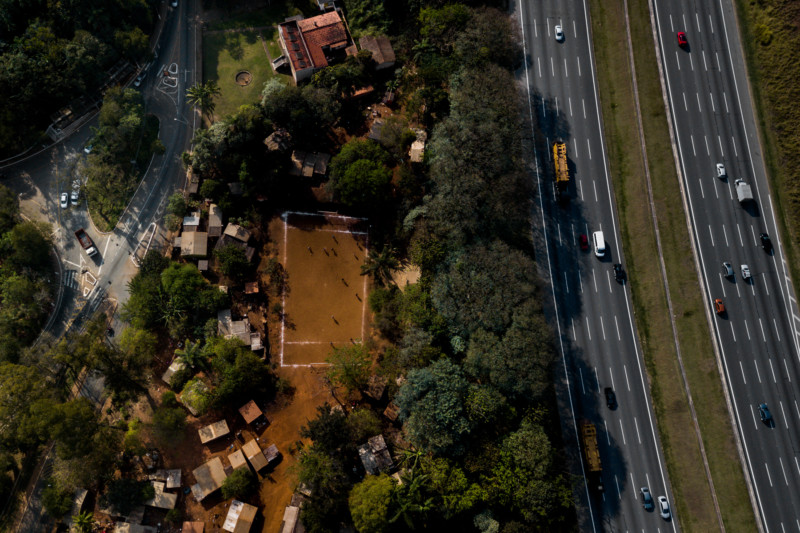
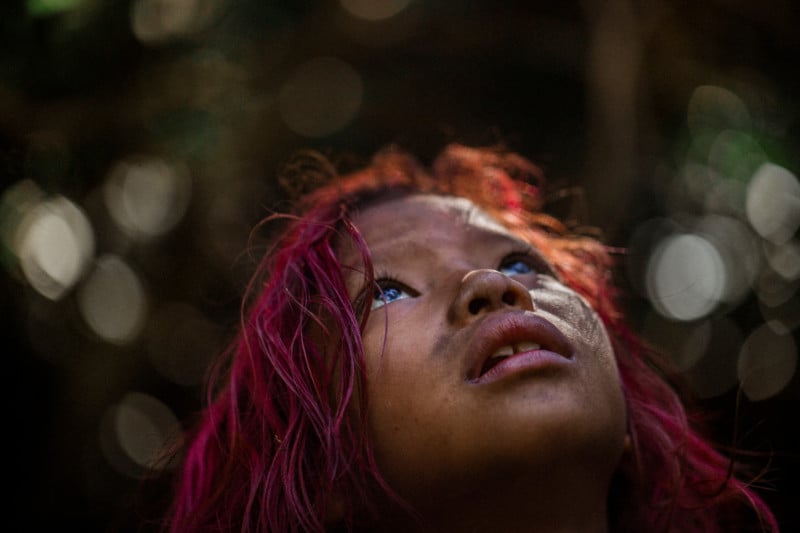
Image Credits: All photos individually credited and provided courtesy of the Leica Oskar Barnak Award 2022.